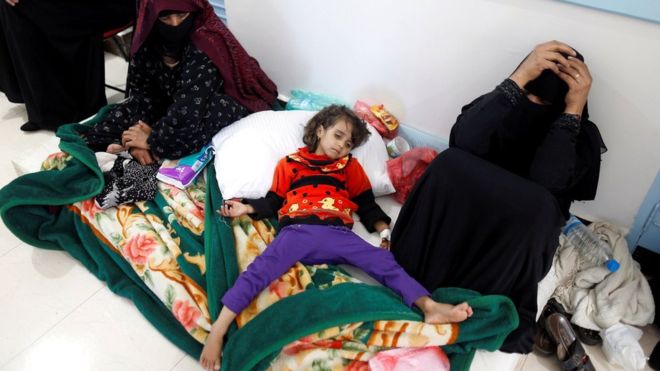Yemen’s Cholera Epidemic Keeps Getting Worse
Yemen’s cholera epidemic is already the worst in the world, but daily it is growing even worse:
The death toll from a major cholera outbreak in Yemen has risen to 1,500, Nevio Zagaria, the World Health Organisation’s representative in Yemen, said on Saturday, and appealed for more help to put an end to the epidemic.
Last week there were 200,000 cases of cholera in the country, and now there are almost 250,000. In another week, unless things change quickly, there will be even more. Cholera is treatable, but it requires being able to deliver the right medicine in sufficient amounts to the sick, and right now the Saudi-led blockade and the devastation of Yemen’s health care system make that very difficult. Aid agencies are working extremely hard to contain the epidemic, but they are doing so without adequate funding and with scant or no cooperation from the governments with the means to help. The civilian population is now especially vulnerable to preventable diseases like this one because of severe malnutrition caused by years of blockade and war. Because of the damage to the country’s infrastructure, it is difficult for people to find enough clean drinking water. The near-famine conditions make it much easier for disease to spread rapidly, and they make it more likely that the disease will kill many more people than it would have otherwise. These are man-made disasters inflicted on the people of Yemen as the result of deliberate policy choices by their neighboring states and their Western patrons.
The U.S. and other coalition supporters can still try to repair some of the damage they have helped cause, but after more than two years of working to bring about the world’s worst humanitarian crisis it is doubtful that any will make a serious effort.

